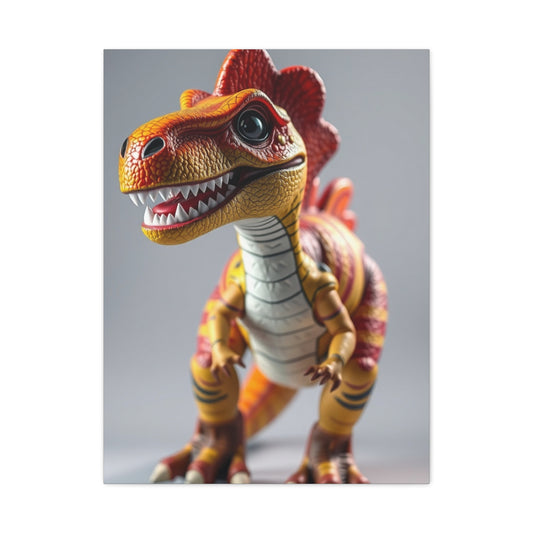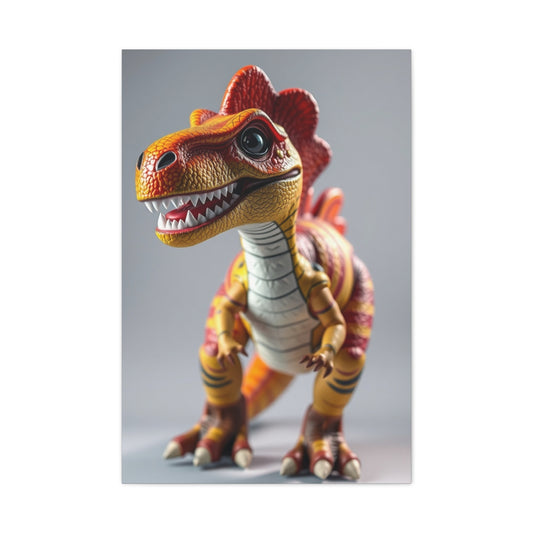Solid wood has been the backbone of furniture, flooring, and home construction for centuries. It is prized for its natural beauty, durability, and timeless appeal. Solid wood refers to timber that is cut directly from trees without any hollow sections or composite layers. Its structural integrity and authenticity make it a preferred choice for homeowners who value long-lasting quality and a connection to nature. Unlike manufactured alternatives, solid wood showcases the natural grain patterns, knots, and textures that make every piece distinct and visually appealing.
The two primary categories of solid wood are hardwood and softwood. Each type has unique characteristics that make it suitable for specific applications. Understanding these differences is essential for making informed choices for your home.
Hardwood is obtained from deciduous trees, which shed their leaves annually. These trees tend to grow slowly, resulting in dense, strong timber. Because of its density and strength, hardwood is ideal for applications that require durability and longevity, such as flooring, dining tables, cabinetry, doors, and staircases. Common examples of hardwood include teak, oak, maple, cherry, walnut, and rosewood. Each type of hardwood has its own unique color, texture, and grain pattern. Teak, for instance, contains natural oils that make it highly resistant to moisture, termites, and decay, while oak is known for its strength and rich, pronounced grain patterns. Walnut, with its dark hues and smooth texture, adds sophistication to furniture, while cherry wood offers a warm reddish tone that deepens with age.
Hardwood’s advantages extend beyond durability and aesthetics. It can be polished, stained, or refinished multiple times without losing its appeal. This makes hardwood furniture and flooring highly adaptable to changing interior trends. Additionally, hardwood is environmentally friendly when sourced sustainably, as it is a natural product without synthetic chemicals. Properly treated hardwood can last for decades, often becoming heirlooms that are passed down through generations. Its resale value is also high, making it a worthy investment for homeowners who prioritize quality and long-term benefits.
Softwood, in contrast, is derived from coniferous trees such as pine, fir, cedar, and spruce. These trees grow more quickly, producing lighter, more affordable wood. Softwood is easier to work with due to its lighter weight and softer texture, making it suitable for furniture, paneling, and decorative structures that do not require extreme durability. Pine is a popular choice for bedroom furniture, shelving, and decorative accents because it can be easily painted or stained. Cedar is valued for its natural fragrance, insect-repellent properties, and smooth finish, making it ideal for wardrobes, cabinets, and storage chests. Softwood is also often used in construction for beams, doors, and window frames, where weight and ease of installation are important considerations.
The choice between hardwood and softwood depends on several factors, including intended use, budget, and aesthetic preferences. Hardwood is best suited for high-traffic areas, structural elements, or investment pieces, while softwood provides a practical and versatile solution for interior decor, lightweight furniture, and budget-conscious projects. Both types offer the opportunity to create custom finishes, from natural, rustic looks to modern, polished designs.
One of the most appealing features of solid wood is its natural imperfections. Knots, variations in color, and grain irregularities contribute to its character, giving furniture and flooring a unique charm that cannot be replicated with manufactured materials. These imperfections make each piece one-of-a-kind, creating a warm and inviting atmosphere in any home.
Solid wood also offers environmental benefits. When sourced responsibly, it is a sustainable material that does not release harmful chemicals or adhesives. It can be reused, recycled, or repurposed into new furniture or decorative items, making it an eco-conscious choice. Unlike some synthetic materials, solid wood has minimal impact on indoor air quality and contributes to healthier living spaces.
Despite its many advantages, solid wood does have certain limitations. It is generally more expensive than engineered alternatives due to the cost of raw materials, slower growth rates, and higher processing requirements. It is also sensitive to environmental conditions. Changes in temperature and humidity can cause solid wood to expand, contract, or warp over time. Moisture exposure can lead to termite infestations or fungal growth if not properly treated. Solid wood is heavier, which can make installation and handling more challenging, especially for large furniture pieces or flooring boards.
Maintenance is an important consideration for solid wood. Regular polishing, sealing, and cleaning are required to maintain its appearance and prevent damage. Minor scratches and dents can be repaired through sanding and refinishing, allowing furniture and flooring to regain their original look. Hardwood, in particular, is highly resilient and can be restored multiple times, making it a practical long-term investment. Softwood, while less durable, can also be maintained effectively with proper care, especially when used in less demanding applications.
In terms of aesthetics, solid wood offers unmatched versatility. It can be crafted into intricate designs, smooth finishes, or rustic textures depending on the desired style. From traditional Indian furniture to contemporary minimalist pieces, solid wood can complement any interior design. The richness of its grain patterns, combined with the variety of natural colors available, allows homeowners to achieve personalized and luxurious interiors.
Choosing the right type of solid wood also involves considering the specific location and use within the home. Hardwood flooring is ideal for areas with moderate foot traffic, such as living rooms, hallways, and dining spaces. Softwood can be used in bedrooms, wardrobes, and furniture that are not exposed to heavy wear. The natural resilience and repairability of solid wood make it suitable for both functional and decorative purposes.
Solid wood’s inherent strength makes it suitable for narrow flooring boards, custom cabinetry, and furniture that requires structural stability. Its weight and density provide a sense of quality and permanence that manufactured alternatives often lack. Homeowners who invest in solid wood are not only choosing a material but also opting for a lifestyle that values tradition, craftsmanship, and durability.
Solid wood is a natural, timeless, and versatile material that remains relevant in modern homes. Its varieties, hardwood and softwood, offer options for different needs, budgets, and design preferences. Hardwood is ideal for durable, high-quality, long-lasting furniture and flooring, while softwood provides affordability and flexibility without compromising aesthetics. The natural imperfections, eco-friendliness, and ability to be refined or reused make solid wood a sustainable and valuable choice. Proper maintenance ensures that its beauty and functionality can be enjoyed for decades, making it an investment that combines style, comfort, and long-term value. Understanding the types, benefits, and limitations of solid wood empowers homeowners to make informed decisions that enhance the overall appeal, functionality, and sustainability of their living spaces.
Introduction to Engineered Wood and Its Varieties
Engineered wood is a modern alternative to solid wood that has gained immense popularity in contemporary homes. Unlike solid wood, which is obtained directly from trees, engineered wood is manufactured by binding wood fibers, strands, particles, or veneers together using adhesives and heat or pressure. This process produces a composite material that combines the aesthetic appeal of natural wood with enhanced stability, affordability, and versatility. Engineered wood is designed to overcome some of the limitations of solid wood, such as sensitivity to moisture, temperature fluctuations, and weight.
There are several types of engineered wood, each with specific characteristics and applications. Plywood is one of the most commonly used forms. It is made by layering thin veneers of wood in alternating grain directions and bonding them together. This cross-grain structure provides strength, stability, and resistance to warping or cracking. Plywood is suitable for furniture, cabinets, flooring, and wall panels, offering a balance of durability and design flexibility.
Medium-Density Fiberboard (MDF) and High-Density Fiberboard (HDF) are other popular forms of engineered wood. These materials are produced by compressing wood fibers with adhesives to form smooth, uniform sheets. MDF has a medium density and is ideal for furniture, decorative panels, and cabinetry where a smooth finish is desired. HDF is denser and stronger, making it suitable for high-traffic flooring and structural applications. Both MDF and HDF can be painted, laminated, or veneered to achieve a variety of designs and finishes.
Blockboard is another engineered wood type that features a core of softwood strips sandwiched between hardwood veneers. This construction provides strength while keeping the material lighter than solid wood, making it ideal for furniture, doors, and partitions. Particle board, made from wood chips and resin, is the most affordable form of engineered wood. Although it is less durable than other types, particle board is widely used in budget-friendly furniture, storage units, and modular interiors.
Some engineered wood products come with laminate or veneer finishes, which allow them to mimic the appearance of natural hardwood. Laminates and veneers offer a wide range of textures, colors, and patterns, making it possible to achieve a luxurious look at a fraction of the cost of solid wood. This versatility has made engineered wood a popular choice for homeowners who want stylish interiors without compromising on budget or practicality.
Engineered wood is particularly valued for its dimensional stability. Unlike solid wood, which can expand, contract, or warp with changes in humidity and temperature, engineered wood maintains its shape over time. This property makes it ideal for areas of the home that experience fluctuating environmental conditions, such as kitchens, bathrooms, and basements. The stability also reduces the risk of structural damage and ensures that flooring and furniture remain level and secure.
Another advantage of engineered wood is its ease of installation. Many engineered wood products are designed for click-lock or glue-down mechanisms, simplifying the installation process compared to traditional solid wood, which often requires nails or screws. The lighter weight of engineered wood also makes it easier to handle and transport, reducing labor costs and effort during home renovations or remodeling.
The cost-effectiveness of engineered wood is one of its most appealing features. It provides the look and feel of real wood without the high price tag associated with hardwood. This affordability allows homeowners to experiment with different styles, finishes, and applications without exceeding their budget. Engineered wood is also highly versatile and can be cut, drilled, and routed using standard tools, making it suitable for custom furniture, modular designs, and creative interior solutions.
Despite its advantages, engineered wood does have certain limitations. Its durability is generally lower than that of solid wood, and it can only be refinished a limited number of times. Over time, the adhesives used to bond the layers may weaken, especially if exposed to excessive moisture or heat. Some adhesives may also release fumes if the material is not properly treated or sealed. Additionally, engineered wood often has a lower resale value compared to solid wood, and it may lack the natural warmth and authenticity that comes with genuine hardwood.
The choice of engineered wood type depends on the intended use and location within the home. Plywood and blockboard are suitable for structural applications, such as doors, partitions, and cabinets, while MDF and HDF are ideal for decorative panels, furniture, and interior detailing. Particle board works well for temporary or budget-friendly furniture, where cost is a more important consideration than longevity. Veneered and laminated engineered wood products are perfect for achieving the visual appeal of solid wood without the high cost, offering a range of designs that complement modern and traditional interiors alike.
Engineered wood is particularly advantageous in areas where moisture and temperature fluctuate. Kitchens, bathrooms, and laundry rooms often experience high humidity, which can cause solid wood to warp or swell. Engineered wood maintains its shape and integrity in such environments, ensuring long-term performance and aesthetics. Additionally, its lighter weight and ease of installation make it a practical choice for modular furniture, wall panels, and flooring in multi-story homes where heavy solid wood may be difficult to manage.
Another important consideration is maintenance. Engineered wood is generally easier to care for than solid wood. It can be cleaned with regular dusting and mild cleaning solutions, and minor scratches or scuffs can be repaired using touch-up kits or veneers. The durability and stability of engineered wood reduce the frequency of maintenance compared to solid wood, making it a convenient option for busy households or commercial spaces.
Engineered wood also allows for creative design possibilities. Its uniform structure and smooth surface make it ideal for intricate patterns, carvings, and laminated designs. Homeowners can choose from a wide variety of finishes, from matte and glossy surfaces to textures that mimic natural wood grains. This flexibility makes engineered wood a favorite choice for modern interiors, where aesthetics and functionality need to coexist seamlessly.
The environmental impact of engineered wood is another aspect to consider. While some engineered products use adhesives and resins, responsible manufacturing processes can minimize harmful emissions. Additionally, engineered wood often utilizes wood by-products and fast-growing species, reducing pressure on old-growth forests and promoting sustainable forestry practices. When sourced responsibly, engineered wood is an eco-friendly alternative to solid hardwood, offering both performance and sustainability.
Engineered wood is a versatile, affordable, and practical choice for modern homes. Its various types, including plywood, MDF, HDF, blockboard, and particle board, cater to different applications and budgets. The material combines the aesthetic appeal of wood with enhanced stability, moisture resistance, and ease of installation. While it may not offer the same longevity or natural authenticity as solid wood, engineered wood provides excellent value, design flexibility, and convenience. Homeowners can achieve stylish, functional, and durable interiors by selecting the right type of engineered wood for their specific needs.
By understanding the characteristics, advantages, and limitations of engineered wood, homeowners can make informed decisions that balance aesthetics, durability, and cost-effectiveness. Whether it’s flooring, furniture, cabinets, or decorative panels, engineered wood offers a wide range of possibilities, making it a reliable and attractive alternative to solid wood.
Comparing Solid Wood and Engineered Wood
Choosing between solid wood and engineered wood often becomes a significant decision for homeowners, as both materials have distinct advantages and limitations. Understanding how they differ in durability, cost, maintenance, and aesthetics can help make an informed choice for your interiors. Each type of wood serves different purposes, and selecting the right material depends on the specific requirements of your home, the intended use of the furniture or flooring, and environmental conditions.
Durability is one of the key factors in the comparison. Solid wood is renowned for its longevity and ability to withstand wear and tear. Hardwood, in particular, can last for decades when properly maintained, retaining its structural integrity and aesthetic appeal. Solid wood’s natural density and strength make it resistant to heavy loads, scratches, and impacts, which is why it is often used for high-traffic areas like living rooms, hallways, and dining spaces. Softwood, while less dense than hardwood, still offers reasonable durability for furniture and decorative elements that are not exposed to heavy use.
Engineered wood, on the other hand, provides moderate durability but is specifically designed to resist environmental changes. Its layered construction and adhesive bonding make it stable and less prone to warping, swelling, or shrinking due to fluctuations in temperature and humidity. This makes engineered wood ideal for areas where moisture is a concern, such as kitchens, bathrooms, and basements. However, it may not match the longevity of solid wood and can only be refinished a limited number of times before its surface wears down.
Cost is another significant consideration. Solid wood is typically more expensive due to the slow growth of hardwood species, the higher quality of raw material, and the craftsmanship required for processing. Hardwood furniture or flooring is a long-term investment, offering high resale value and the potential to be refinished multiple times. Softwood is more affordable but still generally costs more than engineered alternatives. Engineered wood, by contrast, is cost-effective and offers the look of wood without the high price tag. Particle board and MDF are particularly budget-friendly, while plywood and blockboard provide a balance between durability and affordability.
Maintenance and care also differ between the two types. Solid wood requires regular polishing, sealing, and cleaning to maintain its appearance and prevent damage from moisture or pests. Minor scratches and dents can be sanded and refinished, making solid wood highly adaptable over time. Engineered wood is easier to maintain due to its moisture-resistant properties and smooth, uniform surface. While it cannot be refinished as often as solid wood, its stability reduces the need for frequent repairs, making it convenient for busy households.
Aesthetics play a major role in choosing between solid and engineered wood. Solid wood offers a natural charm with unique grain patterns, knots, and color variations, giving each piece a distinct personality. This characteristic makes solid wood highly appealing for creating warm, inviting spaces. Engineered wood, although manufactured, can mimic the appearance of natural wood through veneers or laminates. This allows for a wide range of design options and consistent patterns, which is particularly useful for modern interiors that require uniformity.
Another key factor is installation. Solid wood is heavier and often requires professional installation, especially for flooring or large furniture pieces. Its density and weight can make handling more challenging, but this also adds to its perceived quality and durability. Engineered wood is lighter and designed for easier installation with click-lock or glue-down systems. This makes it convenient for DIY projects and modular furniture setups, reducing labor costs and installation time.
Environmental considerations are increasingly influencing choices between solid and engineered wood. Solid wood is environmentally friendly when sourced responsibly from sustainable forests. It does not contain harmful chemicals or adhesives and can be reused or recycled. Engineered wood can also be eco-friendly, especially when manufactured using wood by-products and low-emission adhesives. It reduces pressure on old-growth forests while offering a similar visual appeal to natural wood. However, some engineered products may contain synthetic resins that release fumes if not properly treated.
When it comes to practical usage, the strengths of each material become more apparent. Solid wood is ideal for narrow flooring boards, intricate furniture, doors, and structures that require long-term durability and aesthetic appeal. It performs best in areas with stable environmental conditions and moderate humidity. Engineered wood is more suitable for wider flooring boards, modular furniture, cabinetry, and areas exposed to moisture or temperature variations. Its dimensional stability ensures longevity in challenging environments.
Evaluating the advantages and disadvantages of both materials can clarify their suitability. Solid wood’s advantages include exceptional durability, timeless beauty, the ability to be refinished repeatedly, high resale value, and eco-friendliness. Its disadvantages are higher cost, sensitivity to moisture and temperature, heavier weight, and more complex installation. Engineered wood’s advantages include affordability, versatility, ease of installation, moisture resistance, and design flexibility. Its disadvantages include lower durability, limited refinishing potential, potential chemical emissions from adhesives, and comparatively lower resale value.
Choosing the right wood also depends on your lifestyle and home environment. If you live in a region with fluctuating weather or high humidity, engineered wood may be the safer choice for flooring and furniture. If longevity, investment value, and natural aesthetics are priorities, solid wood remains the preferred option. For decorative pieces, cabinets, or modular furniture that require easy customization and installation, engineered wood provides practical and stylish solutions.
In addition to general comparisons, specific use cases highlight the unique strengths of each material. Solid wood flooring is perfect for living rooms and hallways where foot traffic is significant and a premium appearance is desired. Wooden furniture made from solid wood, such as dining tables or bed frames, offers durability and a classic look that can be refinished multiple times to keep it looking new. Engineered wood flooring, on the other hand, works well in kitchens, bedrooms, and basements, where moisture and temperature variations are more likely. Engineered wood cabinets and wardrobes are popular choices in modern homes due to their ease of installation and design versatility.
Durability over time is another crucial factor. Solid wood can last decades or even a lifetime when maintained properly, often becoming family heirlooms. Engineered wood typically has a shorter lifespan, but its stability and resistance to environmental changes make it a reliable choice for spaces that might compromise solid wood. For areas where furniture or flooring may need to be moved or replaced frequently, engineered wood offers the advantage of portability without sacrificing style.
Ultimately, the decision between solid wood and engineered wood is influenced by multiple factors: budget, environmental conditions, intended use, aesthetic preferences, and maintenance willingness. Solid wood is ideal for those seeking long-term value, natural beauty, and durability, while engineered wood suits homeowners looking for affordable, versatile, and low-maintenance solutions. Both materials have unique qualities that cater to different needs, and understanding these differences ensures a more informed and satisfying choice.
The comparison between solid and engineered wood highlights the balance between tradition and innovation. Solid wood represents craftsmanship, natural beauty, and resilience, while engineered wood showcases modern efficiency, versatility, and practicality. Homeowners can leverage the strengths of each material to create functional, aesthetically pleasing, and sustainable interiors. By carefully considering the characteristics, applications, and limitations, one can select the most appropriate material for specific needs, whether for flooring, furniture, cabinetry, or decorative elements.
Solid wood and engineered wood each have distinct advantages that make them suitable for different purposes. Solid wood offers timeless beauty, durability, and long-term value, while engineered wood provides stability, affordability, and ease of installation. Evaluating the environment, usage, budget, and design goals can guide homeowners in making the right choice. Both materials have a place in modern homes, and understanding their differences ensures functional, stylish, and sustainable interiors that meet the needs of contemporary living.
Flooring and Furniture: Solid Wood vs Engineered Wood
When it comes to designing interiors, flooring and furniture play a major role in defining the overall ambiance of a home. Choosing between solid wood and engineered wood for these applications requires a careful understanding of durability, aesthetics, installation methods, and long-term maintenance. Each material has its distinct qualities that make it suitable for different purposes, and selecting the right one can enhance both functionality and visual appeal.
Solid wood flooring is synonymous with luxury and timeless elegance. Hardwoods such as teak, oak, maple, and walnut provide unmatched durability, making them ideal for high-traffic areas like living rooms, hallways, and dining spaces. The natural grain patterns, knots, and color variations create a warm, inviting atmosphere that adds character to any room. Solid wood flooring is particularly suitable for narrow boards, where its strength and stability can be maximized. It can be sanded and refinished multiple times over its lifespan, allowing homeowners to maintain or even transform its appearance as design trends change.
Installation of solid wood flooring, however, can be more complex and labor-intensive. The boards are heavy, and proper alignment requires professional skill to ensure longevity and prevent gaps or uneven surfaces. Solid wood is also sensitive to moisture and temperature fluctuations, which can cause expansion, contraction, or warping over time. Therefore, it is best used in areas with stable environmental conditions. Regular maintenance, including polishing, sealing, and cleaning, helps protect the wood from wear, stains, and damage from humidity or pests. Despite these challenges, solid wood flooring remains a preferred choice for homeowners who value premium quality, durability, and aesthetic appeal.
Engineered wood flooring, in contrast, offers enhanced stability and ease of installation. Its layered construction, which involves bonding wood veneers or fibers under heat and pressure, provides resistance to moisture, humidity, and temperature changes. This makes engineered wood flooring ideal for bedrooms, kitchens, basements, and other areas where environmental fluctuations are common. Wide flooring boards are particularly well-suited for engineered wood because the layered structure prevents warping and ensures dimensional stability.
The installation process for engineered wood is generally simpler than that of solid wood. Many products feature click-lock mechanisms or glue-down options, making it feasible for DIY projects and reducing labor costs. Its lighter weight also makes handling and transport easier. Engineered wood can be finished with laminates, veneers, or coatings to mimic the appearance of natural hardwood, offering a wide range of design options without the premium cost of solid wood. While engineered wood cannot be refinished as many times as solid wood, its durability is sufficient for long-term use, especially in environments where solid wood may face challenges.
Furniture is another domain where the choice between solid wood and engineered wood can significantly impact aesthetics and longevity. Solid wood furniture, crafted from hardwoods or premium softwoods, provides durability, elegance, and timeless appeal. Dining tables, bed frames, wardrobes, and cabinets made from solid wood are robust and can withstand heavy use over decades. The ability to sand, polish, or refinish solid wood allows homeowners to update or restore furniture without compromising its structural integrity. Solid wood furniture often gains sentimental and monetary value over time, making it a worthy investment.
Engineered wood furniture, while less durable than solid wood, offers versatility and cost-effectiveness. Modular wardrobes, cabinets, and shelves are often constructed from MDF, blockboard, or plywood, providing lightweight yet functional solutions. Engineered wood allows for precise cuts, custom sizes, and decorative finishes, making it suitable for modern interiors where flexibility is required. Laminates or veneers applied to engineered wood can closely replicate the look of natural hardwood, offering aesthetic appeal without the high cost. Engineered wood furniture is also easier to transport and assemble, making it ideal for urban homes or rental properties.
Maintenance is a crucial factor for both flooring and furniture. Solid wood requires regular care to preserve its appearance and structural integrity. Polishing, sealing, and occasional refinishing help protect the surface from scratches, stains, and moisture damage. Softwoods, while less dense, can also be maintained effectively with proper care and protective treatments. Engineered wood, due to its stability and manufactured construction, demands less frequent maintenance. Regular dusting, mild cleaning, and avoidance of excessive moisture are usually sufficient to maintain its finish. Touch-up kits or replacement veneers can be used to repair minor scratches, ensuring a long-lasting aesthetic.
Longevity is where solid wood often holds an advantage. Hardwood flooring and furniture, when properly cared for, can last for decades and even generations. Its strength, ability to be refinished, and natural resilience to wear make it a sustainable and valuable choice. Softwood may have a shorter lifespan, but it remains durable for moderately used furniture and decorative elements. Engineered wood offers reliable performance over a medium-term period but may show signs of wear or degradation after extensive use or repeated refinishing. The adhesives and layers in engineered wood can weaken over time if exposed to extreme moisture or heat, which is a factor to consider in high-humidity areas.
Another practical consideration is the specific environment of use. Solid wood is best suited for stable, climate-controlled interiors where moisture and temperature do not fluctuate drastically. Living rooms, hallways, bedrooms, and dining areas benefit from the visual richness and strength of solid wood. Engineered wood, by contrast, thrives in environments prone to moisture or thermal variations, such as kitchens, bathrooms, and basements. Its dimensional stability and resistance to warping ensure that flooring, cabinets, and furniture maintain their structure and finish over time.
Both types of wood also have implications for interior design. Solid wood’s natural variations in grain, knots, and color contribute to a unique, personalized aesthetic. Each piece is one-of-a-kind, creating a sense of warmth and authenticity. Engineered wood, while manufactured, offers uniformity and precision, making it ideal for modern, minimalistic designs where consistency in texture and pattern is desired. The ability to use veneers, laminates, and printed finishes expands design possibilities, enabling homeowners to achieve specific looks without relying on rare hardwoods.
When considering flooring and furniture, combining both materials can be a strategic choice. For instance, using solid wood for high-traffic areas or centerpiece furniture and engineered wood for cabinets, wardrobes, or modular pieces provides a balance between durability, affordability, and design flexibility. This hybrid approach allows homeowners to optimize both cost and performance while maintaining a cohesive interior aesthetic.
Environmental considerations are also important. Solid wood sourced responsibly contributes to sustainability and eco-friendliness. Engineered wood often utilizes wood by-products and faster-growing species, reducing pressure on old-growth forests. Responsible manufacturing practices minimize harmful emissions from adhesives, making engineered wood a viable and environmentally conscious choice for modern interiors. Both materials can be repurposed or recycled at the end of their lifecycle, further supporting sustainable practices.
Choosing between solid wood and engineered wood for flooring and furniture involves evaluating multiple factors: durability, maintenance, aesthetics, installation, cost, environmental conditions, and design preferences. Solid wood offers timeless beauty, exceptional strength, and long-term value, while engineered wood provides stability, affordability, ease of installation, and design flexibility. Understanding the strengths and limitations of each material ensures practical, stylish, and sustainable interiors. By carefully matching the right type of wood to the intended application and environmental conditions, homeowners can create spaces that are both functional and visually appealing.
Whether you prioritize elegance, longevity, or practicality, the combination of solid wood and engineered wood offers a spectrum of solutions for modern living. Flooring, furniture, and cabinetry can be selected to complement each other, balancing natural charm with engineered precision. With proper care and maintenance, both materials can enhance the home environment, providing comfort, style, and long-lasting performance.
Applications and Customization of Solid Wood and Engineered Wood
Solid wood and engineered wood are versatile materials that serve a wide range of applications in both residential and commercial spaces. Choosing the right type of wood depends on the intended function, environmental conditions, budget, and design preferences. Each material brings unique benefits, and understanding how they can be utilized effectively allows homeowners, interior designers, and businesses to create aesthetically pleasing, durable, and functional interiors.
In residential settings, solid wood is often chosen for furniture, flooring, doors, and decorative elements. Its natural grain patterns and rich colors make it ideal for living rooms, dining areas, bedrooms, and hallways. Solid wood furniture, such as dining tables, bed frames, wardrobes, and cabinets, is highly durable and capable of withstanding daily use. It can be sanded, polished, and refinished multiple times, ensuring that it remains in excellent condition for decades. Solid wood flooring enhances the beauty of a home by providing warmth and character, particularly in high-traffic areas where durability is essential. Its timeless appeal and ability to harmonize with various design styles make it a favorite for homeowners who value quality and long-term investment.
Engineered wood, with its enhanced stability and affordability, is increasingly used in modern residential interiors. Engineered wood flooring is particularly suitable for areas exposed to moisture or temperature fluctuations, such as kitchens, bathrooms, and basements. Its layered construction prevents warping and ensures dimensional stability, while laminates or veneers can replicate the appearance of natural hardwood. Modular furniture, wardrobes, cabinets, and decorative panels made from engineered wood provide functional solutions that are easier to install, customize, and maintain. This makes engineered wood ideal for contemporary homes where flexibility and practicality are priorities.
Commercial applications also benefit from the unique properties of solid wood and engineered wood. In offices, hotels, restaurants, and retail spaces, solid wood furniture and flooring convey elegance, sophistication, and durability. Conference tables, reception desks, hotel room furnishings, and flooring in high-traffic areas are often crafted from hardwoods like oak, walnut, or teak to ensure long-lasting performance. Solid wood accents in commercial interiors add a sense of luxury and create a professional ambiance, enhancing the overall customer or client experience.
Engineered wood plays a crucial role in commercial interiors where cost, ease of installation, and design versatility are important. Its stability and resistance to environmental changes make it suitable for spaces with fluctuating humidity, such as kitchens, cafes, and areas with air conditioning or underfloor heating. Engineered wood can be used for office partitions, cabinets, modular furniture, wall panels, and flooring. Laminates and veneers allow businesses to achieve consistent designs and patterns across multiple spaces, ensuring a cohesive and professional look. The lightweight nature of engineered wood also simplifies transportation and installation, reducing labor and time requirements in commercial projects.
Customization is a key advantage of both solid wood and engineered wood. Solid wood can be carved, shaped, stained, or polished to match specific design requirements. Intricate patterns, traditional motifs, and contemporary shapes can be achieved, making it ideal for bespoke furniture and interior detailing. Homeowners can select from a variety of wood species, each offering distinct colors, grains, and textures, allowing for personalized designs that enhance the aesthetic appeal of any space. Solid wood also provides opportunities for refinishing, enabling the adaptation of furniture and flooring to evolving interior trends.
Engineered wood offers flexibility in terms of size, shape, thickness, and finish. It can be cut precisely to accommodate modular furniture designs, built-in storage solutions, and decorative wall panels. Laminates and veneers allow for a wide range of colors, textures, and patterns, including finishes that closely resemble rare hardwoods or modern minimalist designs. This versatility makes engineered wood particularly suitable for contemporary interiors, where consistent patterns, smooth surfaces, and customized dimensions are desired. It also allows for the creation of modular and movable furniture pieces that can be reconfigured as needed.
Design tips for using solid wood and engineered wood effectively include combining the strengths of both materials. For instance, solid wood can be used for high-traffic areas, structural elements, and centerpiece furniture, while engineered wood can complement these elements with cabinetry, wall panels, and modular furniture. This approach balances cost, durability, and design flexibility while maintaining a cohesive aesthetic throughout the space. Using solid wood accents in combination with engineered wood surfaces can also highlight contrast and texture, creating visually engaging interiors.
Environmental and sustainability considerations are increasingly important in both residential and commercial projects. Solid wood sourced from responsibly managed forests ensures that natural resources are preserved, while engineered wood often utilizes fast-growing species and wood by-products, reducing pressure on old-growth forests. Responsible manufacturing practices for engineered wood, including low-emission adhesives, contribute to healthier indoor air quality and sustainable building practices. Homeowners and businesses can choose materials that align with eco-conscious values without compromising on performance or design.
Practical recommendations for usage further highlight the differences between the two materials. Solid wood is ideal for furniture or flooring that is expected to last for decades, withstand heavy use, and be refinished or repaired as needed. Engineered wood is better suited for areas exposed to moisture, modular designs, or applications where cost-effectiveness, ease of installation, and uniform appearance are important. For flooring, solid wood is best in stable interior environments, while engineered wood performs well in rooms with fluctuating humidity. For furniture, solid wood is preferable for heirloom-quality or statement pieces, while engineered wood is suitable for functional, modular, or budget-conscious solutions.
Maintenance tips are also essential for prolonging the life of both materials. Solid wood requires periodic polishing, sealing, and protection from excessive moisture or direct sunlight. Regular cleaning with appropriate products helps maintain its natural luster and prevents damage. Engineered wood should be cleaned regularly to remove dust and dirt, avoiding harsh chemicals that can damage the laminate or veneer. Minor scratches or scuffs on engineered wood can often be repaired with touch-up kits or veneer patches, ensuring continued aesthetic appeal. Proper maintenance enhances durability, appearance, and investment value for both types of wood.
The choice between solid wood and engineered wood ultimately depends on a combination of factors: intended application, environmental conditions, budget, aesthetic preferences, and maintenance capabilities. By understanding the unique properties of each material, homeowners and businesses can make informed decisions that optimize functionality, durability, and visual appeal. Both materials offer a range of possibilities for design, customization, and sustainable living, making them integral to modern interior solutions.
Solid wood and engineered wood serve complementary roles in residential and commercial applications. Solid wood provides unmatched natural beauty, durability, and long-term investment potential, while engineered wood offers stability, versatility, cost-effectiveness, and ease of installation. Both materials can be customized to meet specific design requirements, enabling the creation of functional, stylish, and sustainable interiors. By strategically using these materials based on their strengths and applications, homeowners and businesses can achieve aesthetically pleasing, practical, and enduring spaces that cater to both contemporary and traditional design sensibilities.
Making the Right Choice: Solid Wood vs Engineered Wood
Deciding between solid wood and engineered wood is a decision that balances aesthetics, functionality, durability, budget, and sustainability. Both materials offer distinct advantages, and understanding their long-term implications is essential for homeowners, interior designers, and businesses. By examining investment value, maintenance, environmental impact, and overall usability, it becomes easier to make an informed choice that aligns with both practical and design goals.
Solid wood is often considered a premium choice due to its natural durability, strength, and timeless beauty. Hardwood species like teak, oak, walnut, and maple are highly valued for their ability to withstand wear and tear, maintain structural integrity, and age gracefully. Furniture, flooring, and cabinetry made from solid wood can last decades, making it an investment that not only enhances the home environment but also provides long-term financial value. Its ability to be sanded, polished, and refinished multiple times ensures that the appearance can be refreshed or modified according to evolving design trends, further extending its usability.
Engineered wood, while generally less expensive than solid wood, offers an excellent cost-performance balance. Its affordability makes it accessible for homeowners or businesses with budget constraints while still providing a premium appearance through veneers, laminates, and decorative finishes. Engineered wood is particularly advantageous for modern modular designs, where flexibility, precise dimensions, and ease of installation are important. Its layered construction provides resistance to environmental factors such as moisture, humidity, and temperature changes, which can compromise solid wood in certain conditions.
Investment value is one of the main differentiators between solid wood and engineered wood. Solid wood retains higher resale value due to its natural durability, aesthetic appeal, and ability to be refinished multiple times. High-quality hardwood furniture or flooring can become a family heirloom or be sold at a premium, reflecting the intrinsic value of the material. Engineered wood, while less expensive upfront, typically has lower resale value and a shorter lifespan compared to solid wood. However, its reduced cost, stability, and design versatility make it a smart choice for functional, contemporary interiors where flexibility and affordability are priorities.
Sustainability is an increasingly important factor in material selection. Solid wood, when sourced from responsibly managed forests, is an environmentally friendly choice. It is natural, biodegradable, and free from synthetic chemicals. It can be reused, repurposed, or recycled, making it a sustainable material for both residential and commercial applications. Engineered wood also offers sustainability benefits, as it often uses wood by-products, fast-growing species, and minimal waste in manufacturing. Responsible production methods, including low-emission adhesives, ensure that engineered wood can be a green alternative while maintaining its performance and visual appeal.
Maintenance considerations differ between the two materials. Solid wood requires regular polishing, sealing, and cleaning to protect it from moisture, pests, and environmental damage. Minor scratches, dents, or surface imperfections can be repaired through sanding and refinishing, which enhances their lifespan and appearance. Engineered wood requires less intensive maintenance due to its stability and uniform construction. Regular cleaning and occasional touch-ups are usually sufficient to maintain its finish, making it convenient for busy households or commercial spaces where long-term upkeep needs to be minimal.
Practical usability and placement within the home or commercial space also influence the choice between solid wood and engineered wood. Solid wood is ideal for structural applications, high-traffic flooring, centerpiece furniture, and areas with stable environmental conditions. It is particularly suitable for heirloom-quality furniture, decorative elements, and rooms where natural aesthetics are prioritized. Engineered wood is better suited for areas exposed to moisture, such as kitchens, bathrooms, and basements. Its lightweight nature and ease of installation also make it suitable for modular furniture, wall panels, cabinetry, and commercial projects where quick assembly is required.
Another consideration is the design aesthetic. Solid wood is unmatched in its natural variations, grains, knots, and color tones, providing a one-of-a-kind appeal that enhances warmth and character. It complements both traditional and contemporary interiors, adding elegance and sophistication. Engineered wood, while manufactured, offers uniformity, smooth surfaces, and a wide range of finishes, including laminates and veneers that mimic exotic hardwoods. This allows designers and homeowners to achieve precise color schemes, textures, and patterns while maintaining affordability and ease of installation. Combining solid wood accents with engineered wood elements can create visually dynamic interiors that balance natural charm with modern precision.
Longevity is a decisive factor for many homeowners. Solid wood, especially hardwood, can last for decades or even generations if properly maintained. Its resilience to wear, ability to be refinished, and structural strength make it ideal for long-term investment. Engineered wood provides reliable performance over medium-term use but may show signs of wear sooner than solid wood, particularly if adhesives weaken or the surface is repeatedly refinished. Despite this, engineered wood is an excellent option for rooms and furniture where flexibility, moisture resistance, or quick installation is prioritized over long-term investment.
Customization and adaptability are also strengths of both materials. Solid wood can be carved, shaped, stained, and polished to meet precise design requirements. Its inherent characteristics allow for bespoke furniture, intricate paneling, and tailored flooring designs. Engineered wood offers flexibility in terms of dimensions, thickness, and finish. It is well-suited for modular furniture, wall panels, and designs requiring precision. Veneers, laminates, and printed finishes expand creative possibilities, enabling homeowners and designers to achieve the look of premium hardwoods without the associated cost or environmental impact.
Environmental conditions play a crucial role in decision-making. Solid wood performs best in stable climates where moisture and temperature variations are minimal. It is ideal for living rooms, bedrooms, hallways, and dining areas. Engineered wood, with its resistance to humidity and temperature fluctuations, is better suited for kitchens, bathrooms, basements, and commercial spaces where environmental stability cannot be guaranteed. Understanding the conditions of each room or space ensures that the chosen material maintains its structural integrity and appearance over time.
Ultimately, the choice between solid wood and engineered wood depends on a combination of priorities: long-term durability versus affordability, natural aesthetics versus design flexibility, and high resale value versus ease of installation. Both materials have their strengths and limitations, and strategic use of each can maximize benefits. Solid wood may be prioritized for heirloom furniture, centerpiece flooring, and areas where longevity and visual richness are key. Engineered wood can be used for modular furniture, cabinetry, and flooring in moisture-prone areas and budget-conscious designs.
Choosing the right material for furniture, flooring, and interior design is one of the most important decisions homeowners and businesses make when creating functional and aesthetically pleasing spaces. Solid wood and engineered wood are two of the most popular options available, each offering unique advantages tailored to different needs, lifestyles, and design preferences. Understanding the differences between these materials is key to making an informed choice that balances beauty, durability, sustainability, and cost-effectiveness.
Solid wood is widely regarded as the premium choice when it comes to furniture and flooring. Its natural composition, sourced directly from mature trees, gives it unmatched strength and resilience. Hardwood varieties like oak, teak, walnut, and maple are particularly valued for their ability to withstand wear, resist impact, and retain structural integrity over decades. This durability makes solid wood an ideal choice for high-traffic areas such as living rooms, hallways, and dining spaces, as well as for furniture pieces like dining tables, bed frames, and cabinets that are intended to last a lifetime. One of the most appealing aspects of solid wood is its natural grain patterns, knots, and color variations, which give each piece a unique personality and warmth that cannot be replicated with manufactured materials. Over time, these characteristics add charm and character, contributing to interiors that feel authentic and inviting.
Another significant advantage of solid wood is its potential for refinishing. Unlike many other materials, solid wood can be sanded, polished, or stained multiple times, allowing homeowners to update the look of their furniture or flooring according to changing tastes or interior design trends. This ability to restore and renew not only enhances the lifespan of the material but also increases its long-term investment value. Solid wood furniture and flooring often retain, or even increase, their resale value over time, making it a financially sound decision for those looking to combine functionality with lasting elegance.
In contrast, engineered wood offers benefits that make it highly suitable for modern lifestyles, especially in environments where flexibility, affordability, and stability are priorities. Engineered wood is manufactured by bonding layers of wood veneers, fibers, or particles together with adhesives under heat and pressure. This construction method enhances its dimensional stability, making it resistant to warping, swelling, or shrinking, even in areas with fluctuating humidity or temperature. This characteristic makes engineered wood ideal for kitchens, bathrooms, basements, or spaces with underfloor heating—conditions that could challenge the performance of solid wood.
Engineered wood also excels in versatility and design flexibility. It can be manufactured in a variety of thicknesses, sizes, and finishes, including laminates and veneers that replicate the look of rare or exotic hardwoods. This allows homeowners and designers to achieve specific aesthetic goals while staying within budget constraints. The smooth, uniform surface of engineered wood also lends itself well to modern design requirements, such as minimalistic interiors or modular furniture, where precision and consistency are critical. Installation is generally easier compared to solid wood, often involving click-lock systems or glue-down methods that simplify the process and reduce labor costs.
While solid wood emphasizes long-term durability and investment value, engineered wood emphasizes practical performance, adaptability, and cost efficiency. Both materials are environmentally responsible when sourced sustainably. Solid wood from responsibly managed forests ensures that natural resources are preserved, while engineered wood often utilizes wood by-products and fast-growing species, reducing the need to harvest old-growth trees. Modern manufacturing techniques also minimize emissions from adhesives, making engineered wood a more eco-conscious choice compared to older manufactured wood products.
Selecting the right type of wood involves carefully considering multiple factors. Usage is a key determinant: solid wood is best suited for heirloom-quality furniture, centerpiece flooring, and areas of high impact or wear, whereas engineered wood is optimal for modular furniture, cabinetry, and flooring in moisture-prone or flexible-use spaces. Environmental conditions also play a significant role, as engineered wood is more resilient to humidity and temperature fluctuations, while solid wood performs best in stable, climate-controlled interiors. Maintenance capacity is another factor; solid wood requires regular polishing, sealing, and refinishing, while engineered wood is comparatively low-maintenance, requiring only cleaning and occasional touch-ups. Budget is naturally a consideration, with engineered wood offering an attractive alternative for achieving the appearance of premium wood at a lower cost.
A thoughtful approach often involves strategically combining both materials to achieve optimal results. For instance, using solid wood for high-traffic flooring or statement furniture ensures durability and aesthetic appeal, while engineered wood can complement these elements in cabinets, wall panels, or modular furniture, providing flexibility, cost efficiency, and stability in more challenging environments. This hybrid approach maximizes the benefits of both materials, creating interiors that are functional, visually cohesive, and tailored to the specific requirements of the space.
Ultimately, the choice between solid wood and engineered wood is not simply about aesthetics or cost—it is about aligning material properties with the functional needs, environmental conditions, and design goals of a space. By carefully evaluating the advantages and limitations of each, homeowners and businesses can make informed decisions that enhance comfort, style, and sustainability. Both materials, when used thoughtfully, offer long-term satisfaction, combining beauty, practicality, and value in a way that elevates the overall living or working environment.
Understanding the unique strengths of solid wood and engineered wood enables individuals to select the most suitable option for their specific needs. Solid wood delivers durability, refinishing potential, and timeless aesthetics that make it an enduring investment, while engineered wood provides stability, affordability, design versatility, and ease of installation. By considering usage, environment, maintenance, budget, and aesthetic preferences, it is possible to make choices that result in interiors that are not only functional and stylish but also sustainable and enduring. Whether used individually or in combination, these materials provide the foundation for spaces that offer beauty, resilience, and long-term satisfaction, enriching homes and commercial spaces for years to come.
Conclusion
Choosing between solid wood and engineered wood is more than just a decision about materials—it’s a choice that shapes the functionality, aesthetics, and longevity of your home or commercial space. Solid wood stands out for its natural beauty, timeless appeal, and exceptional durability. Its ability to be refinished multiple times, coupled with the richness of its grain patterns and textures, makes it ideal for high-traffic areas, heirloom-quality furniture, and flooring that lasts for decades. While it requires careful maintenance and comes at a higher cost, the investment is reflected in its long-term value, resilience, and unmatched elegance.
Engineered wood, on the other hand, offers versatility, affordability, and practical advantages that meet the demands of modern living. Its layered construction ensures stability against moisture, temperature fluctuations, and everyday wear, making it suitable for modular furniture, cabinets, and flooring in variable environments. With a wide range of finishes, laminates, and veneers, engineered wood can replicate the aesthetic charm of solid wood while offering easier installation, lighter weight, and lower maintenance needs.
Ultimately, the choice depends on your priorities. If longevity, premium quality, and natural authenticity are your focus, solid wood remains the superior choice. If budget, environmental adaptability, design flexibility, and ease of installation are more important, engineered wood is a smart and practical option. Many interiors today benefit from a balanced approach—using solid wood for high-impact areas and engineered wood for functional, versatile, or moisture-prone spaces.
Understanding the characteristics, advantages, and limitations of both materials empowers you to make informed decisions that align with your home’s needs, lifestyle, and design goals. Both solid wood and engineered wood have unique strengths, and when used thoughtfully, they can create interiors that are durable, visually appealing, and sustainable. By weighing your priorities carefully, you can select the right material—or combination of materials—that enhances comfort, style, and long-term value in your living or working spaces.




























